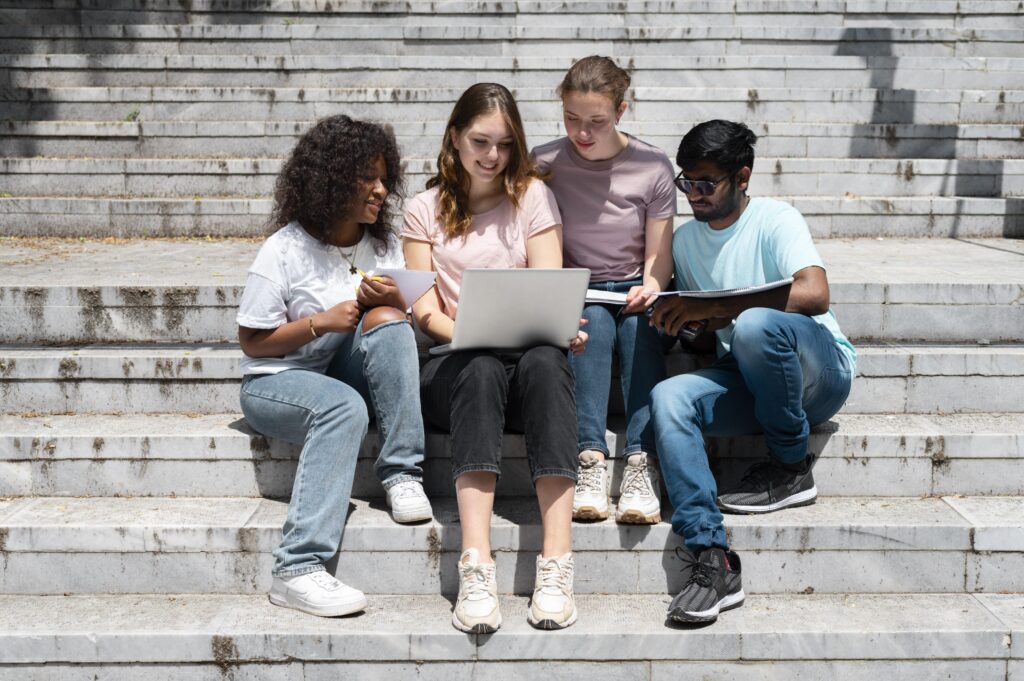Future of Education: Top 10 Trends Shaping Schools in 2025
Education is on the brink of a major transformation. By 2025, the way we teach, learn, and interact within educational systems will be drastically different. Technology, new pedagogical approaches, and evolving societal needs will redefine schools across the globe. In this article, we’ll explore the top 10 trends shaping the future of education, providing insight into how schools will evolve to meet the demands of the 21st century.

1. Personalized Learning Through AI and Data Analytics
One of the biggest changes expected in education by 2025 is the widespread adoption of personalized learning powered by artificial intelligence (AI). Teachers and educational platforms will use AI-driven tools to adapt lesson plans and materials to meet the unique needs of each student. By analyzing a student’s learning patterns, strengths, and areas for improvement, AI can suggest customized resources, activities, and assessments, ensuring that every student learns at their own pace.
Benefits of AI in Education
- Tailored Learning Paths: AI algorithms can create personalized learning paths for students, ensuring they receive the right level of instruction based on their progress.
- Efficiency for Educators: Teachers can focus more on teaching and less on administrative tasks, as AI automates grading and progress tracking.
2. Virtual and Augmented Reality (VR/AR) in the Classroom
Virtual and augmented reality technologies are already making waves in education, and by 2025, they will play a significant role in transforming how students engage with learning materials. VR can transport students to historical events, scientific environments, or even distant planets, providing immersive, hands-on experiences that traditional textbooks simply can’t offer. AR, on the other hand, will bring learning materials to life by overlaying digital content in the real world
H3: Examples of VR/AR in Education
- History Lessons: Students could visit ancient Rome or witness the signing of the Declaration of Independence in a fully immersive VR environment.
- Science Exploration: AR apps will allow students to interact with 3D models of cells, molecules, or planets, offering a deeper understanding of complex concepts.
VR and AR will enhance engagement and retention, allowing students to interact with content in dynamic and exciting ways.
3. Hybrid Learning: The Blended Classroom
The COVID-19 pandemic accelerated the adoption of online learning, and now schools are shifting toward a more permanent hybrid model. By 2025, hybrid learning—where students combine in-person classes with online learning—will become the norm in many schools. This model provides flexibility for students and teachers alike, combining the benefits of face-to-face instruction with the convenience of digital learning.
Advantages of Hybrid Learning
- Flexibility: Students can access lessons, resources, and assignments online, allowing for greater autonomy in their learning.
- Access to a Broader Range of Resources: Online platforms provide students with access to a wealth of digital materials, from videos to interactive simulations, which complement traditional lessons.
Hybrid learning ensures that students are not limited to the four walls of a classroom, creating more opportunities for engagement and collaboration.
4. Sustainability and Eco-Friendly Schools
As global environmental concerns continue to grow, schools are incorporating sustainability practices into their infrastructures and curricula. By 2025, eco-friendly schools will be designed with energy-efficient buildings, renewable energy sources, and waste-reduction practices. Beyond the physical environment, students will be educated about environmental stewardship, learning how to take care of the planet through green initiatives and sustainable practices.
H3: Sustainable Education Practices
- Green Architecture: Schools will incorporate solar panels, green roofs, and energy-efficient lighting to reduce their carbon footprint.
- Sustainability Curriculum: Students will learn about climate change, renewable energy, and how to live more sustainably.
By making sustainability a core part of the educational experience, schools will help shape a generation of environmentally conscious citizens.
5. Mental Health and Well-Being Focus
In 2025, schools will place a much stronger emphasis on mental health and emotional well-being. The pressures of academic performance, social media, and other external factors have contributed to an increasing mental health crisis among students. To combat this, schools will integrate wellness programs, counseling services, and mindfulness practices into their curricula.
Strategies for Supporting Student Mental Health
- Wellness Programs: Schools will provide resources to support the mental and emotional health of students, including yoga classes, therapy sessions, and stress management workshops.
- Mindfulness in the Classroom: Mindfulness exercises will be incorporated into daily routines to help students manage anxiety and improve focus.
A focus on mental health will not only improve students’ well-being but will also lead to better academic outcomes.
6. Gamification of Education
Gamification—integrating game design elements into learning—will become more prominent in schools by 2025. Through the use of games, students will be able to engage in interactive learning that is both fun and educational. Gamification helps increase motivation, encourages competition, and fosters collaboration among students.
Benefits of Gamification
- Increased Engagement: Students are more likely to stay engaged when they are involved in fun, game-based learning experiences.
- Incentives for Achievement: Rewards such as badges, points, and rankings will motivate students to progress and strive for excellence.
Gamification will help transform education into an exciting, rewarding experience for students.
7. Lifelong Learning and Microcredentials
The future of education will not just focus on K-12 or higher education but will also encourage lifelong learning. With the rise of microcredentials—short, targeted certifications for specific skills—students and professionals will continuously upskill themselves to meet the demands of a rapidly changing job market. By 2025, microcredentials will be widely accepted, allowing learners to showcase their competencies in niche areas like coding, digital marketing, and sustainable practices.
8. Collaborative Learning with Global Networks
Global collaboration will be a major feature of education in 2025. With the help of technology, students will be able to collaborate with peers from different countries, working on projects together in real-time. This global network of students will help develop cultural awareness, global citizenship, and teamwork skills.
H2: 9. Teachers as Facilitators of Learning
In 2025, the role of the teacher will continue to evolve from being a traditional instructor to becoming a facilitator of learning. Teachers will guide students through personalized learning paths, offering support and resources rather than delivering information in a lecture-based format.
10. Integration of Blockchain for Credentialing and Assessment
Blockchain technology will be used in schools to securely store academic records and certifications. This decentralized approach to credentialing will make it easier to verify educational achievements, ensuring that students’ records are transparent, secure, and accessible.
Tables:
Comparison of Traditional Education vs. Future Education (2025)
| Aspect | Traditional Education | Future Education (2025) |
|---|---|---|
| Teaching Methodology | Lecture-Based | Personalized, AI-driven |
| Learning Environment | Classroom-Based | Hybrid, Virtual, and AR/VR |
| Teacher’s Role | Instructor | Facilitator, Mentor |
| Focus Area | Subject Mastery | Holistic Development |
| Student Engagement | Passive | Active, Game-Based |
FAQs:
Q1: How will AI change the future of education in 2025?
AI will personalize learning experiences by adapting to individual student needs, offering tailored lesson plans, and providing immediate feedback. It will allow teachers to focus more on student interaction while AI handles routine tasks like grading.
Q2: What is hybrid learning, and how will it impact schools?
Hybrid learning combines in-person and online education, allowing students to learn at their own pace. This model will increase flexibility, accessibility, and engagement in the classroom.
How important will mental health support be in future schools?
Mental health will be a priority in schools of the future, with dedicated wellness programs, counseling services, and mindfulness practices integrated into the curriculum to help students manage stress and anxiety.
What role will sustainability play in education in 2025?
Sustainability will be embedded in both school infrastructure and the curriculum, with green buildings, renewable energy, and lessons on environmental stewardship becoming the norm.
Will gamification be effective in the classroom?
Yes, gamification will enhance student engagement by incorporating game-like elements such as points, badges, and competition, making learning fun and motivating.
Conclusion:
The future of education in 2025 promises to be more personalized, accessible, and engaging than ever before. From AI-driven learning paths to immersive VR/AR experiences, students will have the opportunity to learn in innovative ways that cater to their individual needs. By embracing these trends, schools will be better equipped to prepare students for the challenges and opportunities of the future. Explore more resources on our site to stay ahead of the curve in educational innovation and technology.
